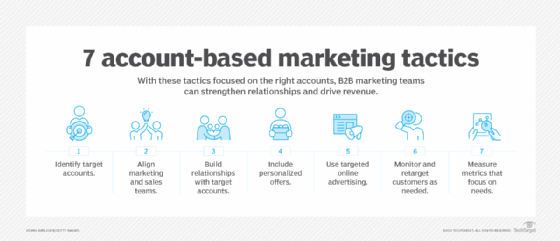What is account mapping, and why do you need it (with template)?
Account mapping is a strategic process that involves researching and visually organizing the key stakeholders, decision-makers and influencers within a target customer's organization. It creates a comprehensive overview of the organizational structure, relationships between individuals and their roles in the decision-making process. It can also identify any potential opportunities for upselling, cross-selling or new business.
With this visual representation, sales teams can better organize the company hierarchy and tag contacts based on their roles for more prioritized and unique messaging. Account mapping aims to gain a deeper understanding of the unique personas within an account and develop insight into their needs, motivations, challenges and preferences. This results in stronger account-based marketing (ABM) and account-based selling (ABS) tactics when building relationships or delivering highly personalized content to different audiences within the organization.
Why is account mapping important?
Account mapping is important for sales teams and account managers seeking to increase their outreach effectiveness and win rates for highly qualified opportunities.
The following are key reasons why account mapping can aid sales and marketing teams in enhancing their ABS and ABM efforts.
Personalized engagement. Teams can identify and understand the roles and needs of individual stakeholders so that the outbound campaigns can include more personalized communications and offerings, which can lead to more meaningful engagements. This personalization results in delivering the right messages to the right people at the right time during the customer journey and during the target account buying process.
Better sales strategy. Sales teams develop well-informed and targeted sales strategies, increasing the likelihood of closing deals. By completing the account mapping exercise, sales teams can prioritize their outreach plans and take advantage of the unique messaging for each persona and their roles within the buying process. It is helpful to know who the key decision-makers are, but it's also important to identify the other executive sponsors, influencers, champions, gatekeepers and any blocker roles that exist within an organization.
Improved relationship building. Building strong relationships with clients is essential for customer retention and repeat business. Account mapping helps foster genuine connections with key decision-makers and influencers. It shows that the selling team understands how to best support the buying organization as subject matter experts in solving pain points.

Enhanced customer experience. By understanding the customer's pain points and objectives, businesses can align their offerings with the client's needs, resulting in a better overall customer experience. For new business sales, the customer has a positive experience and feels confident with their selection when an organization aligns its messaging to their unique problems. When it comes to cross-selling or upselling opportunities, existing customer accounts already view the selling organization as a partner. The goal is to further that relationship with new products and services for the initial buying team while also presenting opportunities to build similar relationships with other departments.
Mitigating risks. Account mapping enables businesses to identify potential risks or roadblocks in the sales process and find proactive measures to overcome them. Some personas in an organization can be viewed as blockers to getting a deal done. Sales teams can either navigate around them or, through research, understand how to overcome some of their objections. Blockers often include finance teams or more junior to midlevel members of the team charged with doing the research for a product and can sometimes be the main points of contact early on. They might block the selling organization by ceasing to answer communications with the rep. Understanding the role each member of the buying process plays lets sales teams approach them in unique ways, mitigating risk for completing the sale.
Benefits of account mapping
The benefits of account mapping extend beyond improved sales performance. Some of the advantages that organizations can gain from adopting this practice include the following:
- Increased revenue. Account mapping facilitates upselling and cross-selling opportunities by identifying untapped areas of the customer's organization where additional products or services can be offered.
- Competitive advantage. A well-executed account mapping strategy provides a competitive edge by enabling an organization to differentiate offerings based on an understanding of customer needs. Aligning with specific personas in the purchasing process can give an advantage to the company that does it right.
- Strategic insights. Understanding the customer's internal dynamics helps businesses align their value proposition with the buying organization's goals and priorities, increasing the likelihood of success.
- Enhanced collaboration. Account mapping promotes collaboration among internal teams, such as sales, marketing and customer service. This can lead to a unified and customer-focused approach.
- Long-term partnerships. By cultivating personalized relationships and delivering value consistently, businesses can establish themselves as trusted partners rather than mere vendors.
Challenges of account mapping
Account mapping also comes with several challenges. The most important to look out for include the following:
- Data overload. Account mapping can often require large sets of data from business social media sites, such as like LinkedIn and Salesforce, as well as data from internal spreadsheets and an organization's own customer relationship management (CRM) tools. This amount of diverse data can be overwhelming and time-consuming to analyze.
- Integration issues. Compatibility issues and data synchronization problems can arise from integrating multiple account mapping tools, such as Crossbeam, account mapping software and sales enablement platforms. Collaborating across teams with different tools and methods can also be difficult.
- Sales reps time constraints. Sales reps often must manage account mapping alongside other responsibilities, which can leave limited time to gather and analyze detailed information on potential customers and ideal customer profiles.
- Limited visibility. Account mapping is only as effective as an organization's visibility into its sales and market ecosystem. Without visibility into partnerships, networks and trends, account mapping can be difficult.
Account mapping techniques
Account mapping techniques can vary based on the complexity of the target organization and the available resources. Two common approaches are individual and partner account mapping.
Individual account mapping. Individual account mapping involves creating profiles for each key stakeholder or decision-maker within the customer's organization. This technique focuses on understanding the individual's role, responsibilities, challenges and priorities. The information gathered can be used to tailor sales pitches and communications that resonate with each stakeholder personally.
The following steps represent the activities needed to execute individual account mapping effectively:
- Identify key stakeholders. Determine the primary stakeholders involved in the decision-making process. This might include C-level executives, department heads, project managers and influencers.
- Research and gather information. Conduct thorough research on each stakeholder, both professionally and personally. Utilize online platforms, social media and company websites to gather relevant information.
- Understand motivations and pain points. Identify the key motivations, challenges and pain points of each stakeholder. This will help tailor the sales approach to address their specific needs.
- Establish communication channels. Determine the preferred communication channels of each stakeholder to ensure effective and timely interactions in order to deliver the right content to the right user at the right time.
Partner account mapping. In this technique, a company maps the accounts of partners or other organizations it has relationships with, identifying mutually beneficial opportunities to partner together for new sales. This can help establish prospects for joint ventures or collaborations, further enhancing business opportunities.
To execute partner account mapping effectively, follow these steps:
- Identify the partners. These can be existing collaborators or potential partnerships that are under consideration. Make sure to focus on partners that align with strategic goals and offer mutual business opportunities between the businesses.
- Understand the partner's organizations. Learn their business structure, key decision-makers, products or services, market segments and strategic goals. Thorough research at this stage will help identify potential synergies and opportunities.
- Find mutual opportunities or complementary offerings. Identify opportunities that can benefit both parties. This could include joint ventures, bundled offerings, cross-promotion or shared market space.
- Create the partner account map. This should include all the information about each partner, as well as identified opportunities and planned actions. In this, highlight formal and informal relationships, as well as key contacts to engage with at different stages of the buying process or within different sales opportunities.
- Communicate and collaborate. Share the partner account map with relevant stakeholders within the business. Seek their input and feedback to refine the strategies. Collaboration is key in maximizing the benefits of partner account mapping, and alignment helps when it comes time to review and update the partner mapping. Services can change, market strategies will adjust and new opportunities for a positive relationship will present themselves, all of which should be considered with any updates.
Account mapping best practices
As a strategic approach, account mapping requires adherence to certain best practices to reap the maximum benefits. Some best practices for account mapping include the following:

- Be consistent. Ensure that account mapping is an ongoing process, not a one-time event. The landscape of key accounts can change rapidly, so regular updates to the account maps are necessary to keep them accurate and relevant.
- Communicate effectively. Maintain regular contact with important individuals at the target accounts and with internal teams. This not only helps to stay on top of any changes within the organization, but it also builds stronger relationships.
- Use the marketing and sales technology stack. A CRM tool, or any other similar software, can be instrumental in organizing, documenting and tracking account mapping activities. It helps in storing and visualizing the gathered insights, making the data easily accessible to all relevant internal team members.
- Foster collaboration. Encourage different teams within the organization to contribute to the account map. This ensures a more comprehensive understanding of the account from diverse perspectives across teams. Moreover, it aids cross-team alignment on strategies and efforts, leading to more cohesive and effective actions.
- Include a plan of action within the account map. After identifying opportunities, devise strategies to capitalize on them. This gives the account map a purpose and direction, and it serves as a roadmap to achieving sales and marketing objectives.
What needs to be included in an account map?
An account map is a comprehensive guide that reflects the intricate details of key target accounts. A meticulously crafted account map includes the following components:
- Organization structure. This includes the hierarchy of the organization, departments and relevant teams. Understanding the structure provides insight into the decision-making process and power dynamics within the account.
- Key contacts and stakeholder profiles. Identify and gain information on the main stakeholders, decision-makers and influencers within the account. This includes their names, titles, roles and contact information, facilitating direct and effective communication.
- Relationship and influence. This reflects the relationships between various contacts, their influence on decisions and their role in the organization. It recognizes potential gatekeepers or champions within the account.
- Decision-making process. Coupled with the relationship and influence, identify the decision-making process within a target account, including the stakeholders involved in each stage.
- Insights and notes. Include any pertinent details, observations or background information about the account or the contacts. This aids in personalizing interactions and better understanding their needs. Key insights should also include key sales enablement metrics.
- Key objections and pain points. This helps a company proactively manage common custom objections, challenges and pain points that the company's offerings can address.
- Opportunities. Identify potential opportunities for business growth or collaboration. This could be a need for the company's product or service, alignment with a strategic goal or scope for cross-selling or upselling. It is also helpful to tap into any partner account maps to surface co-selling opportunities to strengthen the offerings.
- Plan of action. This helps define a clear strategy on how to capitalize on the identified opportunities. A plan of action outlines the steps, timeline, responsibilities and resources involved. It includes any revision schedules or can consider go-to-market changes and new products or services being introduced.
How to build an account map
Creating an effective account map requires a systematic approach. Here's a step-by-step guide to building an account map:
1. Visualize CRM data for strategic insights. From the moment the account mapping process begins, the construction of an account map becomes pivotal. The initial step in account mapping involves consolidating the key contacts within the organization. Create distinct elements or incorporate images into a fresh document to symbolize each contact within the target organization.
2. Attach relevant details. Once the contacts are tagged appropriately, introduce more intricate information. A comprehensive sales account map should encompass vital contact information, enabling seamless tracking of individuals and facilitating direct communication. To provide clarity, clearly identify the document with the account name. For every contact, input their name, job title, contact number and email address.
3. Construct the organizational chart. Organize the established contacts and interlink them using lines according to their hierarchy within the organization. This organizational restructuring represents the moment when the account map truly starts to provide value. As new individuals are identified within the buying process, the account map can be updated to reflect these newcomers and their roles. This org chart can shed insight into their position in the organizational hierarchy, their associations and their roles in any open deal.
4. Label contacts in key roles. In many CRM tools, the "role" field is important for identifying the contact's role in the decision-making process. Contacts are assigned roles that correspond to their function in the deal, such as "champion" or "influencer." If a sales organization has established roles unique to their company, adopt these terms to designate the role for each contact on the account map. Update the corresponding information on the account map accordingly. The following are some standard roles found in an account map:
- Influencer. A person whose perspective impacts the purchase decision, such as an end user of software.
- Blocker. An individual who hinders progress in the deal due to challenges such as unavailability or resistance to change.
- Champion. A person who advocates for the product or service, offering insights into the decision-making process.
- Decision-maker. An individual, often part of a committee, who is vested with the authority to decide on purchasing the product or service.
Completing this stage entails assessing prospects' interests in the products or services offered. This visualization of key roles can be color-coded to make it easy to see different roles at a glance.
5. Maintenance for long-term success. Arriving at the final step doesn't imply completion. Constructing an account map is an ongoing process. Continue adding contacts, notes and key relationships as the account evolves. With the dynamics that exist in sales, shifts in territories and account transitions are common within businesses. When an account changes hands, an up-to-date account map is a clear reference to data within the CRM. It also offers a historical overview, present status, prospect details and streamlined contact methods. This approach minimizes the time teams spend familiarizing themselves with the landscape and enhances their focus on new or open deals.
Account mapping vs. account planning
Account mapping and account planning are often used interchangeably but refer to different strategic sales processes. While account mapping focuses on building a detailed network of relationships and touchpoints within an account, account planning takes the broader approach of setting specific sales goals, initiatives and strategies for engaging those contacts.
Account mapping is typically more data-intensive, involving tools such as LinkedIn Sales Navigator, Crossbeam and Salesforce as well as integrations with CRM platforms. Account mapping uses these tools to identify key players within a sales environment and understand their interrelationships. Account planning also uses the data from these tools and platforms but with a focus on executing a larger strategic playbook for a targeted sales approach.
In contrast to account mapping, account planning is more concerned with crafting a roadmap to approaching potential customers, managing the sales and customer lifecycles and achieving specific measurable goals.
Account mapping is a component of account-based marketing (ABM) strategies. Learn more about ABM.







